Why did garlic rust appear and how to deal with it?

Rust on garlic is one of the most serious and insidious diseases that often affects plants that grow in the conditions of central Russia and the Moscow region. Why this disease appears, how to identify it and what methods of dealing with it are the most effective - we will tell in this article.
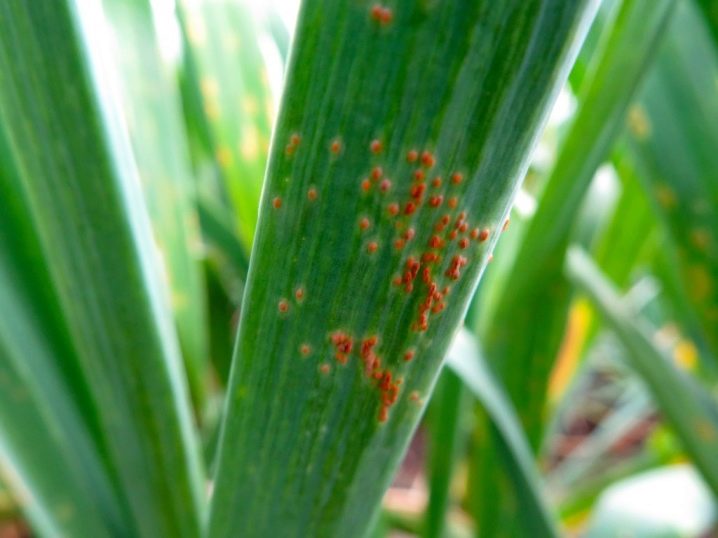
Reasons for the appearance
Rust is a disease caused by a harmful fungus. It hibernates, as a rule, on the remains of old plants. There are a number of reasons why this disease can intensify.
- Initially, it should be said about the conditions that are favorable for the development of this fungus: it is high humidity of air masses and cool weather. When the mark on the thermometer rises above +10 degrees, fungal spores begin to precipitate healthy plants, which is helped by the winds and rainwater. Usually, the period of activation of this disease occurs in May.
- Infection can also occur due to an uncleaned vegetable garden, namely, due to plant debris, on which the fungus hibernates. The fungus itself is very tenacious, and then it is enough to leave a few infected plants in the garden, so that in the future it will hit new plantings.
- Failure to comply with crop rotation can also cause this disease.
So, if you place garlic or related crops every year in the same place, then rust will appear in any case and begin to precipitate the plants.


Signs of defeat
A fungal disease such as rust is dangerous, as it causes enormous harm to the plant, affecting only the ground part of the garlic, in particular the stem and leaves. If the garlic gets sick, then its bulb begins to experience a lack of nutrients and minerals that it needs for full growth and development. It almost completely stops developing, and its taste is noticeably reduced.
It is not difficult to determine the presence of this disease in a plant, since it has a number of pronounced symptoms.
- So, when this disease appears, you can see that the garlic leaves are covered with oval yellowish spots. Such spots are called pustules, over time they begin to darken and turn brown, slowing down the plant's photosynthesis process. The spots themselves do not differ in size, but it is not difficult to see them. On a garlic leaf, they can be located both in groups and in the form of a chain. It is in these pustules that fungal spores develop, which over time are released and attack healthy plants, including other crops.
- There is another type of rust, which can also be identified simply... The disease betrays itself as bright red spots, which are located on the leaf on top of light spots, due to which something like a layering is formed. This is precisely the distinctive feature of this type of rust, but it is very rare.

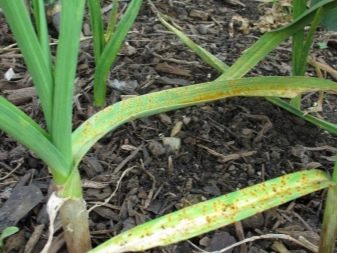
In both cases, rust has a negative effect on the plant, leading to a sharp drop in yield. Affected garlic leaves begin to die off, which is why the head of the plant eventually grows small and underdeveloped. At the same time, the root system of the plant does not rot, however, diseased garlic as a whole grows weakened, which makes it very susceptible to other diseases, and not only during growth, but also during storage.Such garlic is often precipitated by various rot and not only, which increases the risk of losing a significant amount of the crop.
Therefore, having noticed the first signs of rust, it is necessary to start treating the plant, and as soon as possible.

Treatment
There are different ways to deal with a garlic disease like rust. So, if you notice the development of this fungal disease at first, then you can limit yourself to the elimination of the affected areas of the plant, thereby preventing the further development of rust... However, if the disease has already developed, then in this case the plant will have to be treated using other methods.
Among the most effective ways to combat it is the treatment of the plant with the help of special preparations. These include "HOM", "Oxyhom" and "Fitosporin-M". It is these funds that are popular with summer residents and are considered the most effective. You can buy such funds in a specialized suburban store. They will help get rid of the harmful fungus and save the plants, but they must be used correctly, focusing on the instructions for this, which, as a rule, is located on the packaging of the drug.
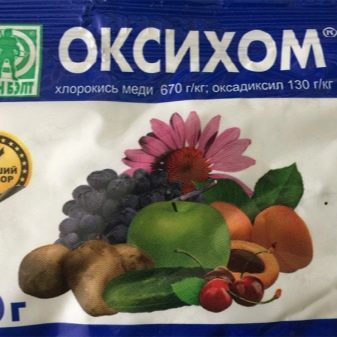
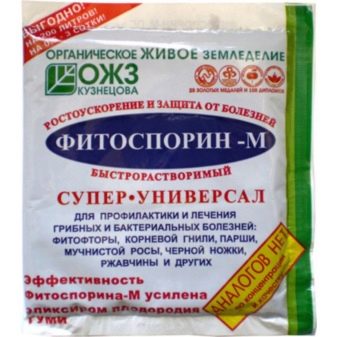
You can also fight garlic rust with the help of folk remedies. You can cook them at home, using the means at hand. In financial terms, such funds are very profitable, but it should be borne in mind that they are less effective than fungicidal drugs. Therefore, it is recommended to use folk remedies either for preventive purposes, or at the first stages of the development of the disease.
It is also allowed to combine them with fungicides..
- So, one of the folk remedies against rust is a solution based on table salt. To prepare it, you will need a glass of the main component and a bucket of water. All this must be thoroughly mixed, after which you can process the plants, smearing the diseased leaves with the resulting mixture. This must be done until the disease is completely eliminated.
- Suitable for fighting rust and solution based on ammonia... It needs to be diluted in a bucket of water, after which you can start spraying the plant. Such treatments should be carried out at intervals of 3-5 days, affecting not only the leaves, but also the land in which the garlic grows.
- Tar soap will also help fight harmful fungal diseases.... It must be grated on a fine grater and dissolved in 10 liters of water. The resulting solution must be treated both the leaves and the garden itself. This should be done once a week until the disease is completely eliminated.


Prevention measures
Preventive measures can help prevent fungal disease and keep your garlic crop intact.
- Plants must be regularly examined in order to notice the symptoms of the disease in time and stop its development. When you notice the first signs of damage, remove diseased leaves. The plant itself in this case will need to be treated with folk remedies or fungicidal preparations.
- At the end of the season, it is imperative to remove plant residues from the beds by burning, because it is on them that fungal spores can remain, which, having survived the winter, become active the next season and begin to precipitate young plants. The garden bed itself will need to be dug at the end of the season.
- Do not forget about the rules of crop rotation. You should not plant garlic in the same place for several years in a row. Otherwise, rust cannot be avoided. In addition, garlic should not be planted for at least 2 years in places where plants infected with rust previously grew.
- It is worth taking the time and proper care. Keep an eye on the level of humidity, and do not forget to spray the plants with special products that will help prevent the occurrence of a harmful disease.
They can also be used to treat the soil before planting new plants.
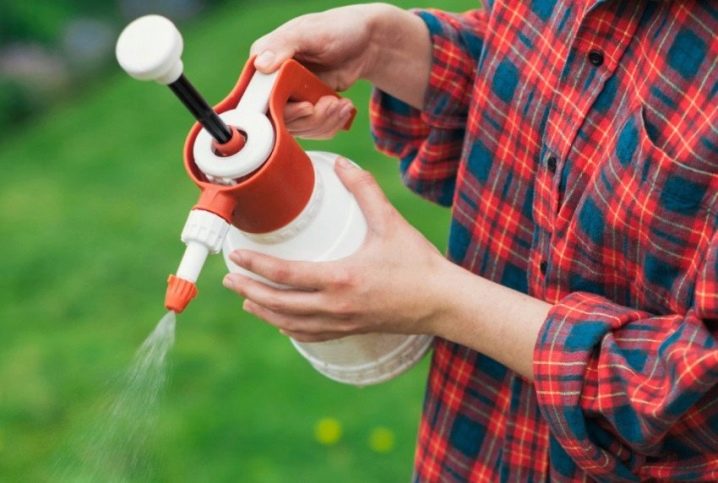





The comment was sent successfully.